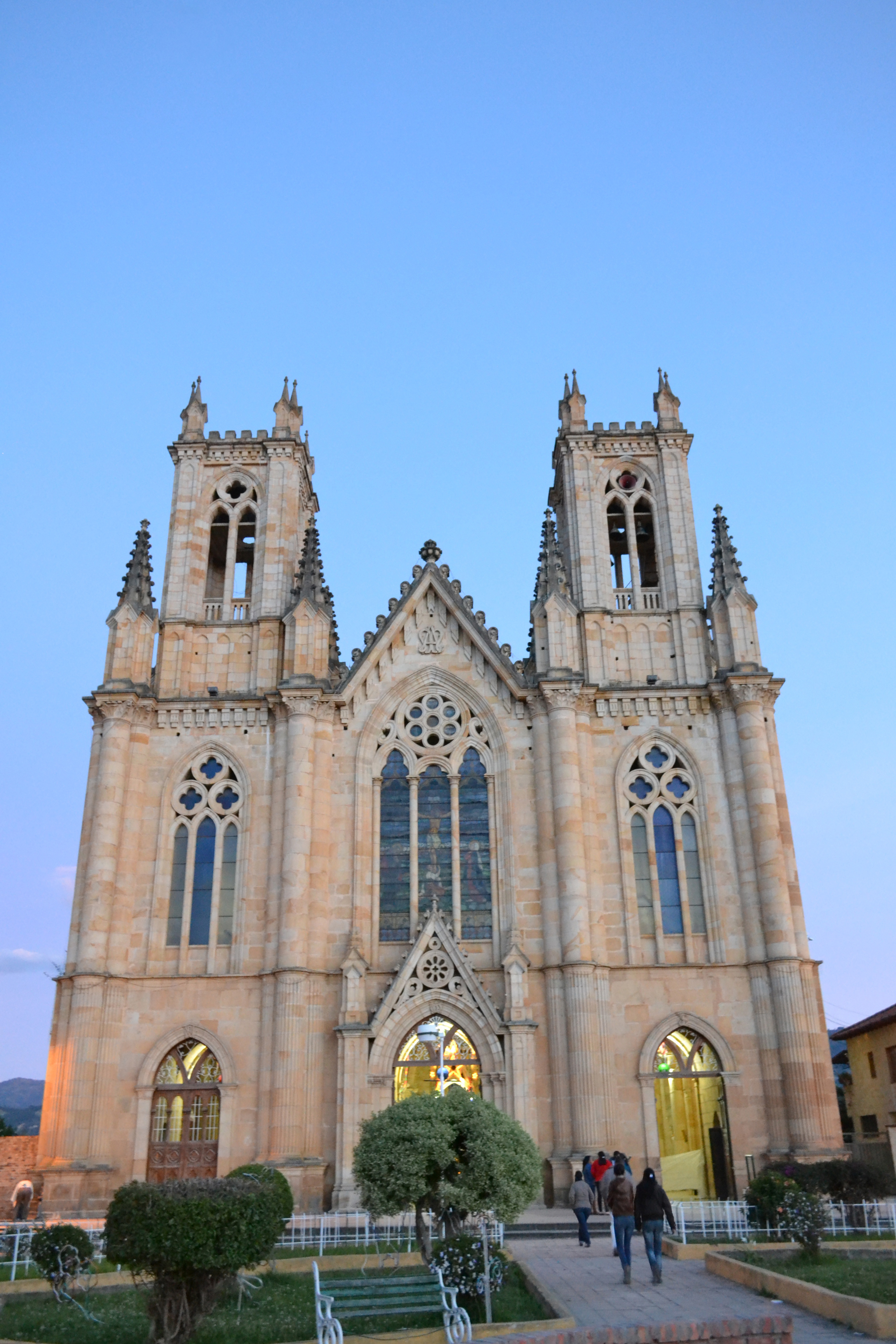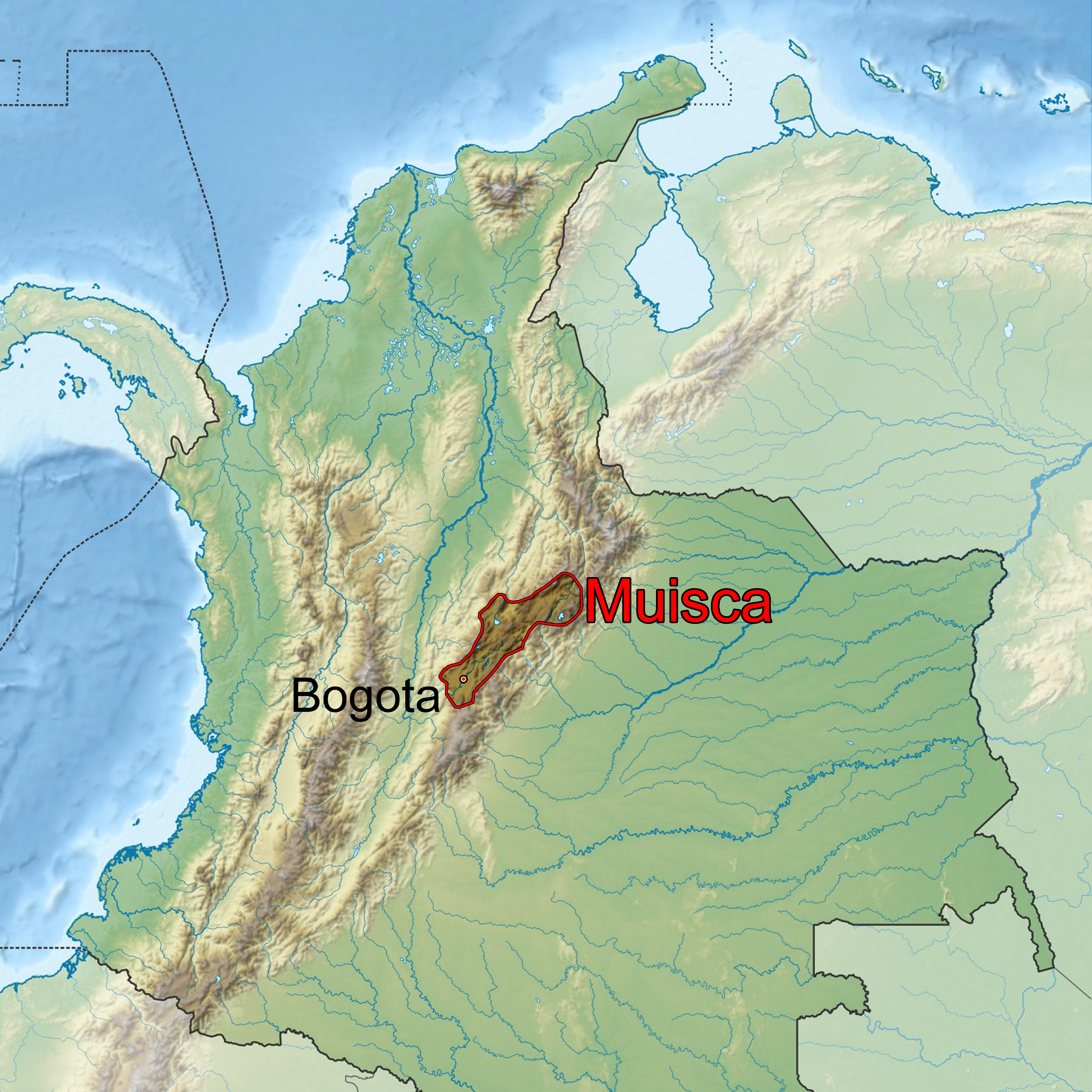|
Busbanzá
Busbanzá () is a town and municipality in the Colombian Departments of Colombia, Department of Boyacá Department, Boyacá. Busbanzá is part of the Tundama Province, a subregion of Boyacá. Busbanzá is located at from Sogamoso. It borders Betéitiva in the north, in the east and south Corrales, Boyacá, Corrales and in the west Floresta, Boyacá, Floresta.Official website Busbanzá - accessed 07-05-2016 History The first inhabitants of Busbanzá settled there from the Orinoquía natural region, Eastern Llanos near a former lake. They were the ancestors of the Muisca people, Muisca of Busbanzá and organized themselves in the ''cacique, cacicazgos'' of the Iraka Valley, together with Gámeza, Floresta, Boyacá, Tobasía, Firavitoba, Iza, Boyacá, Iza ...[...More Info...] [...Related Items...] OR: [Wikipedia] [Google] [Baidu] |
Iraka Valley
The ''iraca'', sometimes spelled ''iraka'',Ocampo López, 2013, Ch.12, p.77Ocampo López, 2013, Ch.14, p.85 was the Muisca rulers, ruler and high priest of Sogamoso, Sugamuxi in the Muisca Confederation, confederation of the Muisca people, Muisca who inhabited the Altiplano Cundiboyacense; the central highlands of the Colombian Andes. ''Iraca'' can also refer to the Iraka Valley over which they ruled. Important List of Muisca scholars, scholars who wrote about the ''iraca'' were Lucas Fernández de Piedrahita, Alexander von Humboldt and Ezequiel Uricoechea. Background In the centuries before the Spanish conquistadores entered central Colombia in the 1530s, the valleys of the Cordillera Oriental (Colombia), Eastern Ranges were ruled by four main leaders and several independent ''caciques''. The northern territories were ruled by the ''zaque'' from Tunja, Hunza, the present-day capital of Boyacá Department, Boyacá departments of Colombia, department and the southern area under ... [...More Info...] [...Related Items...] OR: [Wikipedia] [Google] [Baidu] |
Municipalities Of Colombia
The municipalities of Colombia are decentralized subdivisions of the Colombia, Republic of Colombia. Municipalities make up most of the departments of Colombia, with 1,104 municipality, municipalities (''municipios''). Each one of them is led by a mayor (''alcalde'') elected by popular vote and represents the maximum executive government official at a municipality level under the mandate of the governor of their department which is a representative of all municipalities in the department; municipalities are grouped to form departments. The municipalities of Colombia are also grouped in an association called the ''Federación Colombiana de Municipios'' (Colombian Federation of Municipalities), which functions as a union under the private law and under the Colombian Constitution of 1991, constitutional Freedom of association, right to free association to defend their common interests. Categories Conforming to the law 1551/12 that modified the sixth article of the law 136/94 Art ... [...More Info...] [...Related Items...] OR: [Wikipedia] [Google] [Baidu] |
Betéitiva
Betéitiva () a town and municipality in the Valderrama Province, part of the Colombian department of Boyacá. The urban centre of Betétiva is situated at from the capital Bogotá, from the department capital Tunja and from Sogamoso. The municipality, located on the Altiplano Cundiboyacense, borders in the north Belén, in the northeast Paz de Río, in the east Tasco, in the southeast Corrales and in the west with Busbanzá and Cerinza. Etymology The name Betéitiva is derived from the Chibcha name of the ''cacique'' Betacín of the village and means "chief of the anchovy". According to Muisca myths, Betacín fell in love with the daughter of the ''iraca'' of Sugamuxi and after her dismissal he retreated in the area now known as Betéitiva.Etymology Betéitiva - Excelsio.net Hi ...
|
Firavitoba
Firavitoba is a town and municipality in Sugamuxi Province, a subregion of the Departments of Colombia, department of Boyacá Department, Boyacá in Colombia. Before Spanish colonization, Firavitoba was part of the Muisca Confederation of the Chibcha people in the highlands of the Cordillera Oriental (Colombia), Eastern Cordillera of the Andean natural region, Colombian Andes. Firavitoba belonged to the Iraca or Suamox state which, uniquely, did not observe a hereditary leadership system but elected its ruler alternately from Firavitoba and Tobasá, two of its many tribes. Firavitoba is distinguished by its Gothic Revival architecture, neo-Gothic church, the third biggest in Colombia. Nuestra Señora de las Nieves (Our Lady of the Snows) was built between 1873 and 1976, entirely of stone sourced from nearby Sogamoso's Pedregal district. Etymology The name Firavitoba derives from the Muysccubun language of the Muisca people. One etymology gives the root words as ''fiba'' ("air" ... [...More Info...] [...Related Items...] OR: [Wikipedia] [Google] [Baidu] |
Gámeza
Gámeza () is a town and municipality in the Colombian Department of Boyacá, part of the Sugamuxi Province, a subregion of Boyacá. The town center is located at from Sogamoso and the municipality borders Tasco and Corrales in the north, Tópaga and Mongua in the south, in the east Socotá and westward of Gámeza Corrales and Tópaga.Official website Gámeza - accessed 04-05-2016 History Before the in the 1530s, Gámeza was inhabited first by indigenous groups during the[...More Info...] [...Related Items...] OR: [Wikipedia] [Google] [Baidu] |
Muisca People
The Muisca (also called the Chibcha) are indigenous peoples in Colombia and were a Pre-Columbian culture of the Altiplano Cundiboyacense that formed the Muisca Confederation before the Spanish colonization of the Americas. The Muisca speak Muysccubun, a language of the Chibchan language family, also called ''Muysca'' and ''Mosca''. The first known contact with Europeans in the region was in 1537 during the Spanish conquest of New Granada. In New Spain, Spanish clerics and civil officials had a major impact on the Muisca, attempting to Christianize and incorporate them into the Spanish Empire as subjects. Postconquest Muisca culture underwent significant changes due to the establishment of the New Kingdom of Granada. Sources for the Muisca are far less abundant than for the Aztec Empire of Mesoamerica or the Inca Empire and their incorporation to the Spanish Empire during the colonial era. In the New Kingdom of Granada and into the colonial era, the Muisca became " ... [...More Info...] [...Related Items...] OR: [Wikipedia] [Google] [Baidu] |
Floresta, Boyacá
Floresta is a town and municipality in Boyacá Department, Colombia, part of the Tundama Province, a subregion of Boyacá. Floresta is situated on the Altiplano Cundiboyacense in the Eastern Ranges of the Colombian Andes. It borders Santa Rosa de Viterbo, Cerinza and Betéitiva in the north, in the east Busbanzá and Corrales in the west Santa Rosa de Viterbo and Nobsa in the south. History Before the Spanish conquest of the highlands of Colombia, the area of Floresta was inhabited by the Muisca, organized in their Muisca Confederation. In those days Floresta, together with Santa Rosa de Viterbo, was called Tobasía which is still the name of a corregimiento of the village. Tobasía was ruled by a ''cacique'' loyal to the ruler of Tundama, present-day Duitama. Modern Floresta was founded in 1818, three years before the independence of Colombia from the Spanish Empire. Floresta means "between the flowers". [...More Info...] [...Related Items...] OR: [Wikipedia] [Google] [Baidu] |
Boyacá Department
Boyacá () is one of the thirty-two departments of Colombia, and the remnant of Boyacá State, one of the original nine states of the "United States of Colombia". Boyacá is centrally located within Colombia, almost entirely within the mountains of the Cordillera Oriental, Colombia, Eastern Cordillera to the border with Venezuela, although the western end of the department extends to the Magdalena River at the town of Puerto Boyacá, Boyacá, Puerto Boyacá. Boyacá borders to the north with the Department of Santander Department, Santander, to the northeast with the Bolivarian Republic of Venezuela and Norte de Santander, to the east with the departments of Arauca Department, Arauca and Casanare Department, Casanare. To the south, Boyacá borders the department of Cundinamarca Department, Cundinamarca and to the west with the Department of Antioquia Department, Antioquia covering a total area of . The capital of Boyacá is the city of Tunja. Boyacá is known as "The Land of ... [...More Info...] [...Related Items...] OR: [Wikipedia] [Google] [Baidu] |
Tundama Province
The Tundama Province is a province of the Colombian Department of Boyacá. The province is formed by 9 municipalities. Etymology The province is named after ''cacique'' Tundama Tundama or Saymoso (15th century – late December 1539 in Duitama) was a ''cacique'' of the Muisca Confederation, a loose confederation of different rulers of the Muisca who inhabited the central highlands (Altiplano Cundiboyacense) of the Co ....Etymology Tundama - Excelsio.net Subdivision The Tundama Province comprises 9 municipalities:Provincias de Boyacá/ref> References ...[...More Info...] [...Related Items...] OR: [Wikipedia] [Google] [Baidu] |
Wheat
Wheat is a group of wild and crop domestication, domesticated Poaceae, grasses of the genus ''Triticum'' (). They are Agriculture, cultivated for their cereal grains, which are staple foods around the world. Well-known Taxonomy of wheat, wheat species and hybrids include the most widely grown common wheat (''T. aestivum''), spelt, durum, emmer, einkorn, and Khorasan wheat, Khorasan or Kamut. The archaeological record suggests that wheat was first cultivated in the regions of the Fertile Crescent around 9600 BC. Wheat is grown on a larger area of land than any other food crop ( in 2021). World trade in wheat is greater than that of all other crops combined. In 2021, world wheat production was , making it the second most-produced cereal after maize (known as corn in North America and Australia; wheat is often called corn in countries including Britain). Since 1960, world production of wheat and other grain crops has tripled and is expected to grow further through the middle of ... [...More Info...] [...Related Items...] OR: [Wikipedia] [Google] [Baidu] |
Potato
The potato () is a starchy tuberous vegetable native to the Americas that is consumed as a staple food in many parts of the world. Potatoes are underground stem tubers of the plant ''Solanum tuberosum'', a perennial in the nightshade family Solanaceae. Wild potato species can be found from the southern United States to southern Chile. Genetic studies show that the cultivated potato has a single origin, in the area of present-day southern Peru and extreme northwestern Bolivia. Potatoes were domesticated there about 7,000–10,000 years ago from a species in the '' S. brevicaule'' complex. Many varieties of the potato are cultivated in the Andes region of South America, where the species is indigenous. The Spanish introduced potatoes to Europe in the second half of the 16th century from the Americas. They are a staple food in many parts of the world and an integral part of much of the world's food supply. Following millennia of selective breeding, there are now over 5 ... [...More Info...] [...Related Items...] OR: [Wikipedia] [Google] [Baidu] |
Muisca Religion
Muisca religion describes the religion of the Muisca people, Muisca who inhabited the central highlands of the Colombian Andes before the Spanish conquest of the Muisca. The Muisca formed a Muisca Confederation, confederation of holy Muisca rulers, rulers and had a variety of deity, deities, temples and rituals incorporated in their culture. Supreme being of the Muisca was Chiminigagua who created light and the Earth. He was not directly honoured, yet that was done through Chía (goddess), Chía, goddess of the Moon, and her husband Sué, god of the Sun. The representation of the two main celestial bodies as husband and wife showed the complementary character of man and Women in Muisca society, woman and the sacred status of marriage.Muisca religion - Pueblos Originarios - accessed 04-05-2016 The Muisca worshipped the ... [...More Info...] [...Related Items...] OR: [Wikipedia] [Google] [Baidu] |




